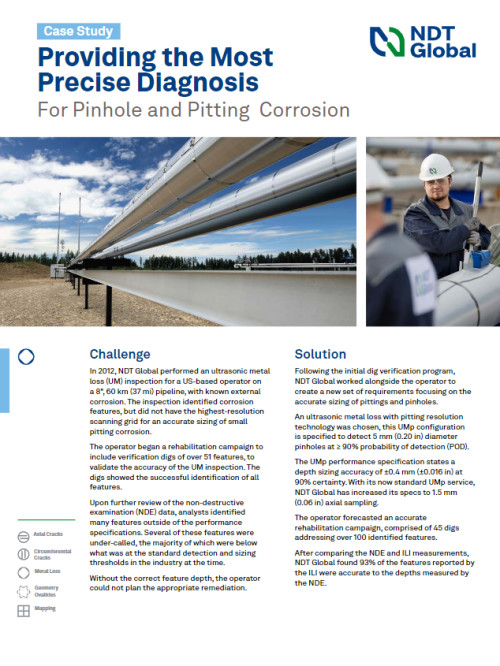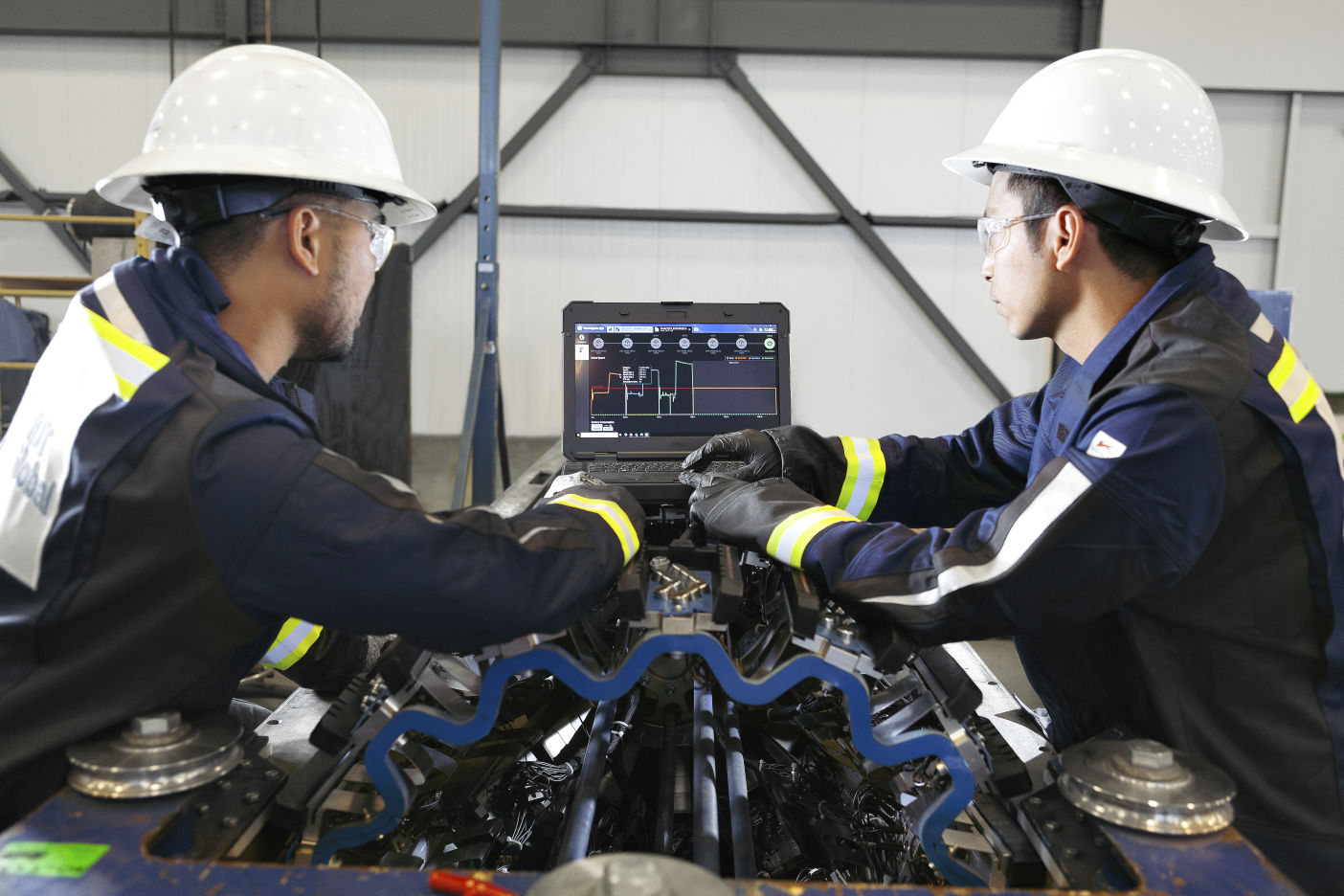In 2012, NDT Global performed an ultrasonic metal lossRefers to the reduction in material thickness or cross-sectional area of a pipe due to corrosion, erosion, or other forms of degradation. inspectionThe systematic process of visually examining, testing, or monitoring pipeline components to assess their condition, integrity, and compliance with regulatory re… for a US-based operatorAn entity or organization responsible for the operation, management, and maintenance of a pipeline system. The operator is entrusted with ensuring the safe, rel… on a pipeline that is over 60 km (37 mi) long, with 8" in diameter, that had known external corrosionThe deterioration or degradation of a pipeline caused by chemical or electrochemical reactions with its environment. Corrosion is a significant concern as it ca…. NDT Global re-examined the line in 2015 with its ultrasonic metal loss service.
While the first inspectionThe systematic process of visually examining, testing, or monitoring pipeline components to assess their condition, integrity, and compliance with regulatory re… run identified the features, it did not have the highest-resolution scanning grid to get an accurate sizing of such small pittingLocalized corrosion of a pipeline's metal surface, resulting in small, localized pits or cavities. corrosionThe deterioration or degradation of a pipeline caused by chemical or electrochemical reactions with its environment. Corrosion is a significant concern as it ca…. The limitations on the depth sizing accuracyThe accuracy with which an anomaly dimension or characteristic is reported. in the first report posed a challenge for the operatorAn entity or organization responsible for the operation, management, and maintenance of a pipeline system. The operator is entrusted with ensuring the safe, rel…’s integrityThe capability of a pipeline to perform its intended function safely and reliably throughout its life. It includes a range of factors, including the structural … analysis team. With the operator facing the alternative of an additional, expensive dig program, a new inspection solution was required to give a more accurate measurement of these pittings and pinholes.
The project team originally planned the inspectionThe systematic process of visually examining, testing, or monitoring pipeline components to assess their condition, integrity, and compliance with regulatory re… without it specifically configured to identify small diameter pittings and pinholes. They performed the inspection by utilizing what was the standard UM technology with a 3.0 mm (0.12 in) axial sampling rate. After receipt of the final inspection report, the operatorAn entity or organization responsible for the operation, management, and maintenance of a pipeline system. The operator is entrusted with ensuring the safe, rel… began a rehabilitation campaign which included verificationThe process of confirming or verifying that an inline inspection (ILI) meets specific requirements, standards, or expectations. It involves assessing and evalua… digs for over 51 features over a two-year period, to validate the accuracy of the ultrasonic metal lossRefers to the reduction in material thickness or cross-sectional area of a pipe due to corrosion, erosion, or other forms of degradation. inspection. The digs showed the successful identification of all features. Upon further review of the non-destructive examination (NDE)Refers to a range of techniques and methods used to assess the integrity, quality, and properties of materials, components, or structures without causing damage… data, analysts identified many features outside of the performance specifications. Several of these features were under-called, the majority of which were below what was at the standard detection and sizing thresholds in the industry at the time. Due to its axial sampling rate, this older tool frequently failed to detectTo sense or obtain a measurable indication from a feature.
some small pittings within corrosionThe deterioration or degradation of a pipeline caused by chemical or electrochemical reactions with its environment. Corrosion is a significant concern as it ca… areas, did not hit the deepest point of the featureGeneral term for an anomaly detected during an assessment. Features can be anomalies, components, nearby metallic objects, welds, appurtenances, or some other i… and as a result under-called them. Without the correct feature depth, the operator could not plan the appropriate remediationThe appropriate actions taken to address or rectify issues, deficiencies, or anomalies identified in a pipeline system. It involves implementing corrective acti…. To properly prioritize repairs and other actions, the operator needed to be confident of the feature sizing accuracyThe accuracy with which an anomaly dimension or characteristic is reported..





